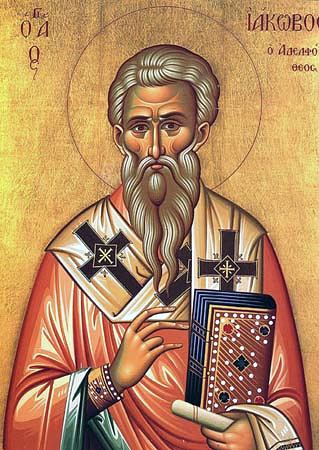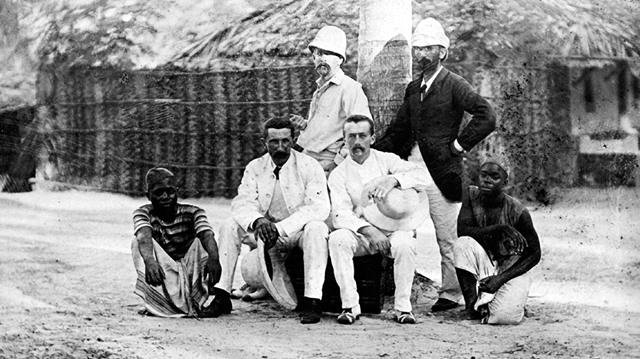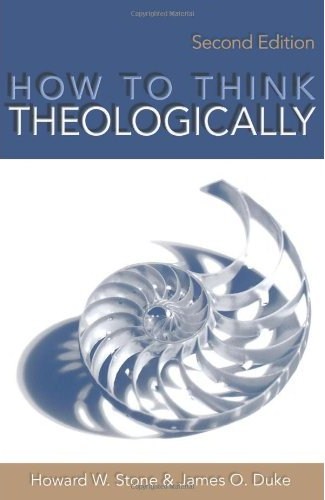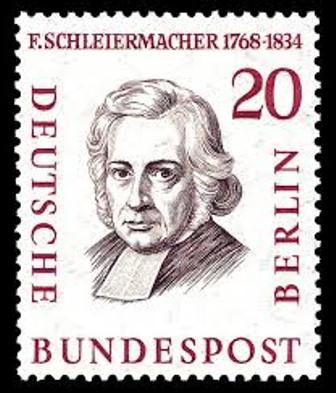 Sorry for the inordinate length of this post. Having spent a number of weeks on the exegesis of this passage, I wanted to prepare a sermon based on the passage, moving from exegesis to exposition. I have not preached the sermon, and it would change somewhat according to the audience and context, and as story, illustration and application are added and focused. It could be shortened if time was limited, or extended to two sermons to allow for more extensive exposition of the supporting texts and ideas. I have tried to avoid moralising and to use the passage to preach the gospel, though with faithfulness to James’ idiom. Let me know if you think it works.
Sorry for the inordinate length of this post. Having spent a number of weeks on the exegesis of this passage, I wanted to prepare a sermon based on the passage, moving from exegesis to exposition. I have not preached the sermon, and it would change somewhat according to the audience and context, and as story, illustration and application are added and focused. It could be shortened if time was limited, or extended to two sermons to allow for more extensive exposition of the supporting texts and ideas. I have tried to avoid moralising and to use the passage to preach the gospel, though with faithfulness to James’ idiom. Let me know if you think it works.
*****
“FAITH UNDER FIRE”
A common experience is misconception: we read the data wrongly and get the wrong impression; we have false hopes and unrealistic expectations. Perhaps we think we will get married and live happily ever after: never the slightest spat; this one person will delight me, nurture me, inspire me—til death do us part! Maybe we start a new job or join a new church with high hopes that soon come crashing down. We go to a reputation restaurant and leave disappointed. We think the Dockers will win the Grand Final…
Many believers tend to have misconceptions and unrealistic expectations about the Christian life. Sometimes, having experienced something of the good and gracious God, having received answers to prayer, and the blessings of Christian acceptance and fellowship, having been taught about the victory we have in Christ, some believers may gain the impression that the Christian life is one of continual blessing and endless triumph, praise, thanksgiving and victory. If only that were true! Generally it does not take too long to be disabused of these misconceptions because, simply speaking—you’ve seen the bumper stickers: “stuff” happens.
From the very first words of his letter, James wants to set us straight, but also give us a fresh perspective concerning the nature of Christian life.
Read the Text: James 1:2-8
James’ words are almost incomprehensible: rejoice when the tough times come! I like J.B. Phillips’ rendition of this verse: When all kinds of trials and temptations crowd into your lives, my friends, don’t resent them as intruders, but welcome them as friends! What was James thinking? Welcome trouble? Invite it in like a long-lost friend? Rejoice in trials? The worse it gets the better we like it? At least he is not telling us to go looking for trouble! He doesn’t have to, because you know as well as I do that trouble comes, “ready or not.” Troubles and trials come to everybody. Is there anyone here who has not faced some kind of test even this week? For some, the trials may have been a minor inconvenience or a momentary frustration. For others, the trials are far more serious, perhaps even a matter of life and death, of major stress or life-change. For others still, the whole course of their life is a continual trial and hardship: unrelenting pain, physical or emotional; the grief of loved ones gone and never returning, of dreams which can never be fulfilled, of reversals from which it seems there is no return.
Alana’s story: measles in infancy...
How can those who suffer in these ways ever make sense of James’ advice? Actually, it’s more than advice: it’s a command. Consider it pure joy, my brothers and sisters, whenever you face trials of any kind. How can we possibly obey so counter-intuitive a command? Where’s the joy in trials? How can we rejoice when life threatens, hurts and disappoints?
It is evident that James wants to reframe our understanding of life and its many and various trials. He wants God’s people to have new wisdom, godly wisdom, and a new perspective so that when the trials come, they may view them with new eyes, so that they may even become productive rather than destructive. What is James wants us to know?
1. Trials come, but they have a special meaning for Christians
Everyone faces all kinds of trials, and Christians are not exempt (1 Cor. 10:13). Trials arise simply on account of life in a fallen and broken world. These are the conditions of existence faced by all and sundry. Other trials emerge because of human sinfulness and foolishness—our own and that of others. Christians will face all kinds of trials because of these features of life, just as everyone else will. You don’t have to go looking for trouble…
But Christians also face trials specifically on account of their faith. Trials arise because we are Christians: persecution, the suffering which arises because we refuse to participate in the sinfulness of the world, the difficulties which may arise because we have chosen to do the good. We may be forced to wonder if it is really worth being Christian at all. But our faith is also tested even in the normal trials of life: we may wonder where is God when it hurts? Does God care, or have we been forsaken? Is God even real, or have we mistakenly believed in God? Would it not be easier if we simply gave up our belief? It is for this reason that James refers to trials as tests of our faith. No matter how practical an issue we face, in the end what is being tested, tried, probed, pressured and put to question, is our faith.
“These things are sent to try us…” Yes—and No. Another common misconception amongst Christians especially, is that God sends these trials for the purpose of perfecting us, maturing us, or teaching us some lesson. To say this, I believe, is to confuse purpose and effect. God may bring a positive effect out of our trials, but this is not to say that God purposed the trial for this effect. I want to affirm that God is sovereign over all things, that there is not one moment nor one millimetre of this world which is not subject to his vision and power. But to say this is not to suggest that God is the only actor in this world and in our lives. Indeed, James holds a vision of reality similar to other New Testament writers, and to that of his brother, Jesus.
See Ephesians 6:10-13; 1 Thessalonians 3:1-5; 1 Peter 5:8-9; Luke 22:21-32
The apostles Paul and Peter, and the Lord Jesus each warn us of the spiritual context in which the believer’s faith is tested. There is a spiritual enemy whose attack is directed against our faith. These tests do not come to build our faith, but to destroy it.
Why? Because our faith is precious (2 Peter 1:1), a precious gift by which we have been brought into a living relation to God and made heir of all his promises (Romans 5:1-2). Without faith it is impossible to please God (Hebrews 11:6), and indeed Jesus wondered whether, at his return, he would find faith on the earth (Luke 18:8). Thus, he gave the great assurance to Peter—and so also to us—that he prays for us that our faith would not fail (Luke 22:32; cf. Romans 8:34; Hebrews 7:25), for it is by faith that we overcome the world (1 John 5:4) and inherit eternal life (John 3:16; Hebrews 6:12). Indeed, we are preserved by the power of God through faith, and our faith will result in praise, glory and honour to God at the coming of Christ (1 Peter 1:5-6). How precious is our faith! No wonder the enemy of our souls directs his attack against this most precious gift of God.
Given what is at stake, James goes on to teach us how to stand in the midst of trial.
2. Rejoice in Hope
And so we are back where we began. James’ first instruction is that we rejoice in the face of testing and trials. We do not rejoice for the test—which intends our hurt—but in the midst of the test, trusting that God can provide a way of escape and deliverance (1 Corinthians 10:13; Psalm 34:19), and that regardless of what happens, our very lives and our every hope are in his hands. Many passages of Scripture instruct us to rejoice in God even in the midst of testing (e.g. Psalm 27:5-6; 50:23; Jonah 2:9; Matthew 5:11-12). We rejoice in God’s saving grace and promise. We rejoice in the hope which is laid up for us in heaven beyond the vicissitudes of this life.
It is only possible to have such joy, even in the midst of suffering, if we know these ways of God. Because you know, says James. Not only are we to know and believe the hope which awaits us beyond this life, the hope of eternal life and blessing and grace in Christ, but we are also to know that as we stand fast in the midst of the trial, as we persevere and endure, as we exercise the very faith that is under attack, and hold fast to it trusting God, then the trial intended to destroy our faith actually serves to strengthen it! Indeed, the trying of our faith develops patience, endurance and perseverance.
Hypomonē – replacing and strengthening the pillars under Garrett Road bridge. When faith is threatened and begins to sag or weaken, endurance is the strength that helps us stand and withstand. Instead of buckling and collapsing under the pressure, our faith is supported and strengthened.
3. Stand Fast Together
But, says James, adding a second command, let perseverance finish its work. In other words, we must stand fast until the end, as Jesus also taught, the one who endures to the end shall be saved (Matthew 10:23; 24:13). How could we ever do this? Only together, only in the company and with the encouragement of our brothers and sisters in Christ. James has addressed these commands not primarily to individuals, but to the community of the church, his brothers and sisters in the faith. We need one another more than we realise, and over the course of our lives together, we will have many opportunities to give and receive encouragement and care, and help one another stand firm in our faith. Those who are strong are to help bear the burden of the weak for tomorrow we may be the weak in need of their strength (see Romans 15:1-2).
But there is also something more at work here. We are to let perseverance have its perfect work so that [we] may be perfect—mature and complete—not lacking anything. For James, this is the way to maturity, to wholeness, to perfection. God is able to bring good out of that which was intended for evil! He is able to make all things—even the attacks designed to overcome us—work together for good, so that we might be conformed to the image of his Son Jesus (Romans 8:28-29). That you may be perfect!—what vision and confidence James has for his suffering people! James views Christian maturity in terms of mature and virtuous character, and this character is formed and refined as we stand fast together, encouraging and supporting each other, that we might grow, more and more, into the very image of Christ. This is what we were made for—to become a people of character, a truly human community!
4. Pray—and stay—in faith
James finishes his exhortation with two further commands and a very solemn warning. The two commands are let him ask of God and, let him ask in faith. In every trial we need the kind of wisdom that we have already been receiving from James. But we also need the particular wisdom required for the particular circumstances in which we find ourselves, so that we can respond wisely and appropriately. And so James commands any who lack wisdom to ask God for it, and he encourages us that it will be given to us.
But while we may lack wisdom, we must not lack faith! Again we are alerted to the importance of faith in the Christian’s relation with God. Of the various virtues mentioned in this passage—faith, joy, perseverance, wisdom, mature character—faith is singled out as preeminent. We have already mentioned that without faith it is impossible to please God (Hebrews 11:6). Without faith it is also impossible to receive the answers to our prayers. Let not that [doubt-filled] person think that they shall receive anything from the Lord.
Over against the steady trustingness of faith stands the unstable, wavering nature of doubt. To some extent we all doubt sometimes. To doubt is to stand wavering between two options, non-committal and undecided. However, Martin Luther has helpfully suggested that although we cannot stop the birds from flying over our heads, we can stop them from building a nest in our hair! Doubtful thoughts will come into our minds and when they do we must let perseverance finish its work! We can stand together and help one another to trust in God. This kind of doubt is normal and not what James assails in this text.
What James assails is the doubt which has become entrenched in a person’s life to such an extent that it now characterises them: they are a doubter. James graphically portrays this person in terms of the restless, ceaseless, shifting movement of the stormy sea, tossed and thrown hither and thither, driven this way and that: in other words, this person is precisely the opposite of the settled strength and confidence of those who have let perseverance finish its work. They are a double-minded, two-souled, unstable, indecisive, uncommitted kind of person. They cannot, will not and do not commit themselves unreservedly to God. They cannot, will not and do not entrust themselves to his promise and his care alone. They cannot, will not and do not depend rest their hope fully upon God. Let not that person expect to receive anything from the Lord—anything!
A great secret to answered prayer is to pray in faith and then to stay in faith. Nowhere in Scripture is this more clearly taught than in Jesus’ words in Mark 11:22-25, where Jesus teaches that when we pray we must “believe that you have received it, and you shall have it.” The believer believes the answer has been given when they pray, and before they ever actually receive the answer. They must believe first and then “you shall have it.” I once heard an elderly preacher with a whole life of experience say, “Between every prayer and its answer there is a wilderness, and what you do in that wilderness determines whether or not the prayer will be answered.” What was he saying? Pray in faith and then stay in faith. Continue to trust. Let perseverance finish its work!
How can we possibly have such unwavering faith? Here pastor James provides another piece of practical Christian wisdom: keep your eyes firmly fixed on the good and gracious God, rather than on yourself! Instead of worrying about whether or not our faith is sufficient, turn away from yourself and look solely toward the good and gracious God. In verse five James magnifies the generosity of the good and gracious God, who gives generously to all without finding fault. The Greek text is even stronger: God gives with single-minded generosity. Over against the double-minded person stands the single-minded God! God is single-minded in his grace and generosity toward us, and calls us to be single-minded in faith and trust toward him. He is the good and gracious God, the generous-hearted God who has promised to accompany us through every moment of this life, to hear and answer our prayers, and to bring us safely into his heavenly kingdom! This is the good and gracious God who holds our entire existence—past, present and future—in the palm of his hands; the God who will never leave or forsake us.
Trust in this good and gracious God!
Stand fast in the good and gracious God!
Rejoice in the good and gracious God … that you may be perfect and complete, lacking in nothing!











